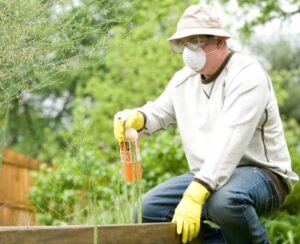Setting Up Your Vegetable Garden
Guest Post by Elena Willson
 Setting up a vegetable garden at home can be a great way to save money, provide a new interest in your free time, feed your family with healthy food and get up close and personal with nature.
Setting up a vegetable garden at home can be a great way to save money, provide a new interest in your free time, feed your family with healthy food and get up close and personal with nature.
Growing tomatoes, zucchini and any other favorite vegetables that you like can save you all those frequent trips to the market and make your cooking much easier with all the ingredients at hand.
Moreover, you’ll discover that the flavors and textures of home-grown vegetables far exceed the ones bought at the grocery store . . . so, check out these tips on how to get your vegetable garden off to a great start.
Come up with a plan
Start your veggie garden project by making a list of your favorite vegetables and short-list it to the ones that are quite expensive at the shop but taste the best when fresh.
Start off small with a few vegetable beds that you can expand every year as you become more confident and experienced.
If the area for your vegetable garden is new, you need to decide what style of gardening and planting system you want.
It could be raised beds, square foot gardening, or traditional rows.
The general recommendation is to define the garden beds about 1.2m wide and as long as you want them to be with at least 60cm space in between them. Preferably, it should be in an area of your garden that gets lots of sunlight and is close to a water source.
Another great option is to construct and implement a greenhouse to grow plants in.
They are an excellent method as they offer protection for your plants from pests, frost and chilly weather, making your growing much easier especially if you live in a colder area.
Greenhouses come in many shapes and sizes, and with the benefits they offer, you’ll spend less time worrying about growing problems and more time enjoying your gardening!
Choose your plants
Your next step is to choose what plants to grow.
Think about what vegetables your family likes to eat the most.
The easiest ones to grow are typically tomatoes, beans, squash, tomatoes, lettuce, and various greens.
The general advice is to start growing your plants from seeds sown directly in the ground, but you could also use seedlings.
You could even grow your own seedlings indoors or purchase them at a local nursery. In early spring, just before the last frost, sow those plants that grow best in cooler weather, such as carrots, turnips, beets, parsnips, spinach, peas, radishes, and Swiss chard.
After the last frost, start planting warm-weather vegetables, such as squash, cucumber, beans, and corn.
Rely on proven tips and techniques
There are proven tips and techniques that can help your veggie garden grow more efficiently and productively.
One preferred method involves the practice of succession planting.. . .For instance, you can grow a warm-season crop like beans in the same place where you previously harvested a cool-season crop like spinach.
Interplanting is another way to get the most out of your planting space.
Combine fast-maturing crops, such as lettuce, with slow growers, such as broccoli.
You’ll have harvested lettuce by the time the broccoli requires more space.
Prepare the soil
You’ll hardly get any yield if you don’t provide the best possible soil for your plants.
When it comes to your garden, rich, healthy soil is something that’s easily recognized – it’s easy to dig and drains well.
The combination typically contains a mixture of sand, silt and clay, and their proportion will dictate the texture of your garden soil.
This texture will affect drainage and amounts of nutrients.
Luckily, any type of soil can be improved in time by using organic matter, commonly compost.
This will help connect the particles in the soil, retain moisture and nutrients, and get the plant roots the much-needed oxygen.
Regardless of the way you grow your plants, you should also be ready to tackle pests and diseases.
There are different solutions available, but basically, you need to stop the weeds in their tracks, keep any animals out, fight fungal disease and deter destructive insects.
When you decide to start up your vegetable garden, it’s important to understand the basics and take one step at a time.
Make a good plan, work at your own speed and try to enjoy the process.
Hopefully, the tips listed here will encourage you to roll up your sleeves and get started on your green thumb journey.
As you get better at it, besides your veggies, why not expand and add some herbs, edible flowers, and fruits as well?